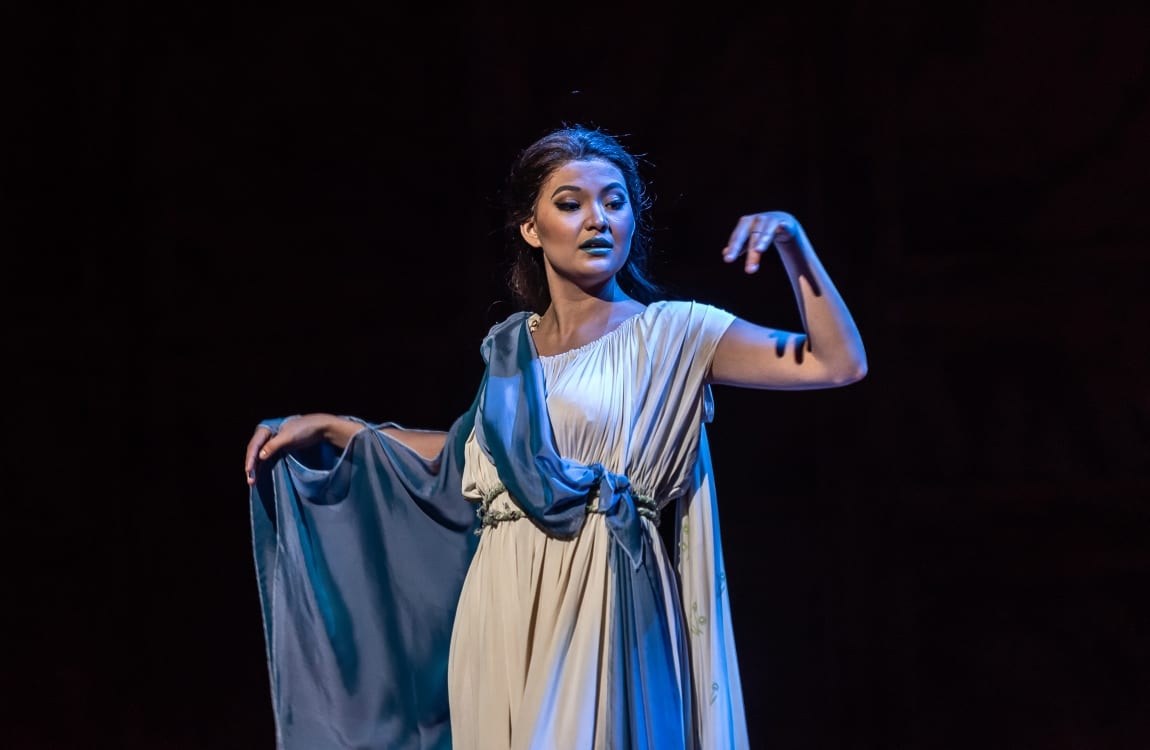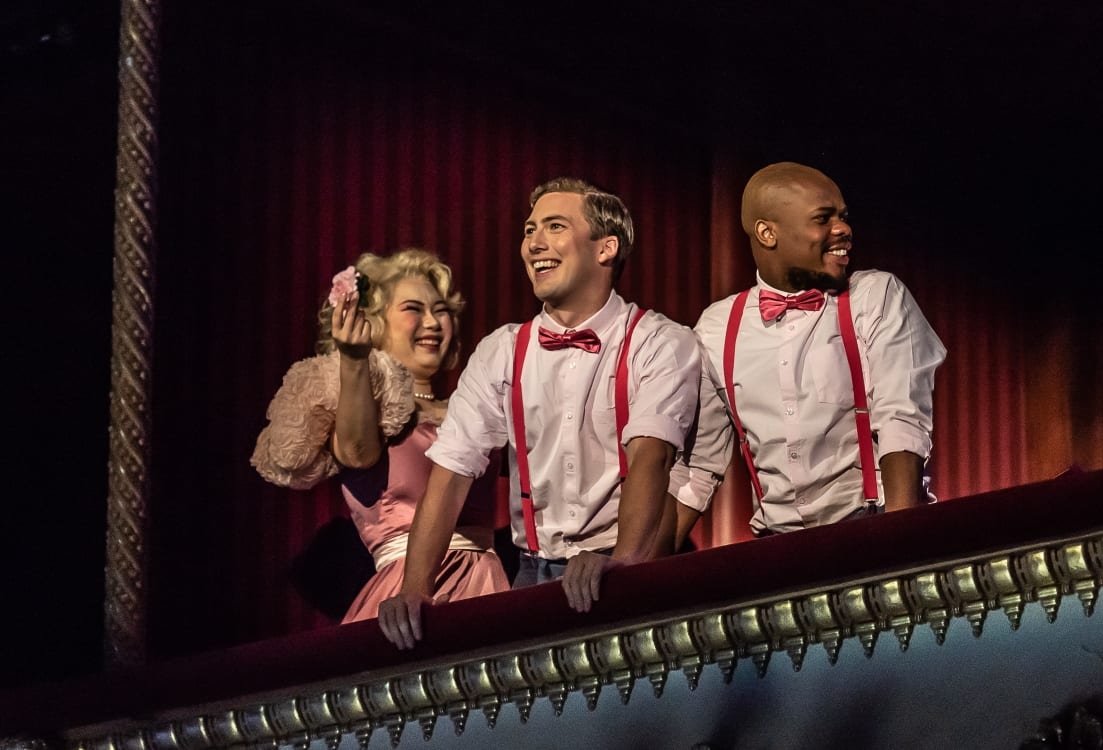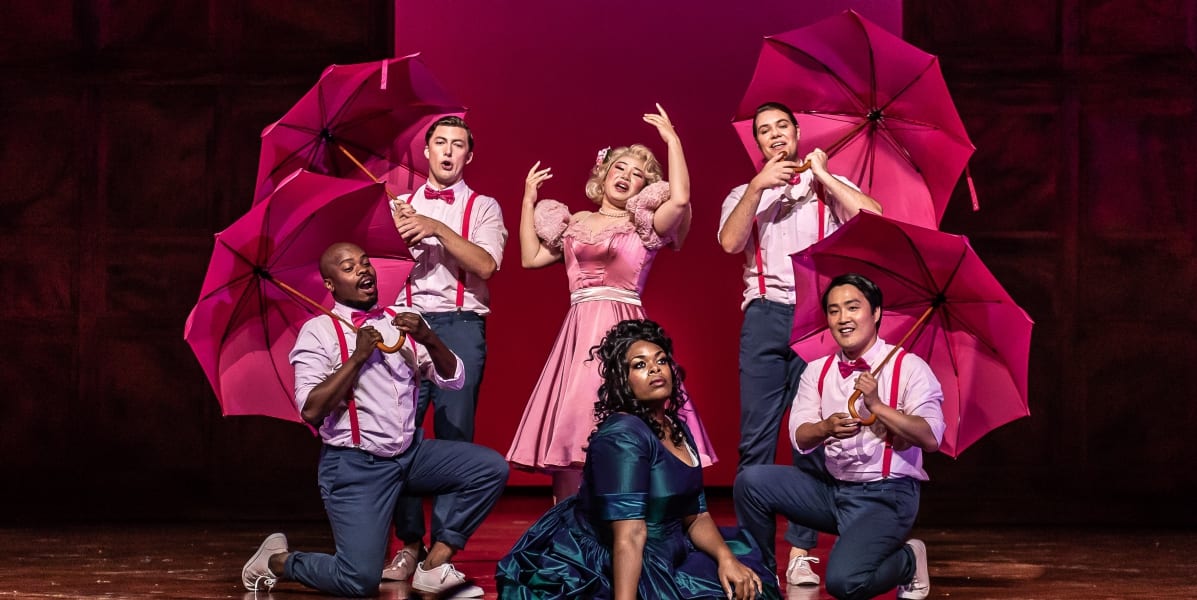This opera matinee has become not just a focal point for the Jette Parker Young Artists themselves at the end of their association with Royal Opera House, but also something of a highlight marking the end of the season at Covent Garden. It showcases not just singers but also conductors and directors who train and work with the Royal Opera House over two years. Since its inception in 2001 many of these young artists have become well known and successful in the wider operatic world.
After a bracing ‘bonne bouche’ in the form of the opening fanfare from ‘The Rake’s Progress’, we went straight into Offenbach’s overture to ‘La Belle Hélène’. Bringing an isolated overture to life is hard work for any conductor but this performance remained a sputtering firework that never took off. There were some lovely long-spun lines from the woodwinds of Opera North, but the faster sections seemed disjointed and lacking the kind of Gallic high spirits and swagger you would normally associate with this composer.

The bulk of the first half was devoted to carefully edited sections from the revised version of Strauss’ ‘Ariadne auf Naxos.’ This is a good opera in which to find a range of contrasted parts for ensemble performance, but it did not catch light until the entry of the commanding vocal presence of Sarah-Jane Lewis in the title role and the following, delightfully directed scene between Zerbinetta (Haegee Lee) and the comedians. Lewis evoked memories of Jessye Norman early in her career, with a wonderful dynamic range and a sense for the arc and shape of the long melodic as well as a refulgent tone. Likewise, Lee was fully equal to the coloratura demands of her role and interacted roguishly both with the fellow members of her acting troupe and the empathetic nymphs, who echo her sentiments literally while attending on Ariadne. The Prologue to the opera came off rather less well, with Angela Simkin failing to soar in the Composer’s gorgeous paean to music as a sacred art, and, oddly, encouraging the orchestra to supply that role instead.
The remaining three highly contrasted segments were much more successful overall. The performance was taking place on the set for Robert Carsen’s production of ‘Falstaff’, which really came into its own for the final scene of ‘The Rake’s Progress’ with the stable setting of Act 3 providing a suitable showcase for the chorus of the insane in Bedlam, and a centre-stage ramp on which Thomas Atkins could play out Rakewell’s poignant farewell both to his idealised ‘Venus’, and to life itself. Atkins embodied the role superbly, with rich yet ethereal tone, and acted out the character’s exhaustion and desperation with real conviction aided by a highly empathetic Anne Truelove from Francesca Chiejina. It was also a real pleasure to hear the preceding jazzy orchestral interlude with a fine trumpet solo – a moment that makes you think more of Miles Davis than of Stravinsky.
After the interval we returned for the first section of the third act of Ambroise Thomas’ ‘Hamlet’, a work that sadly does not get the performances it used to. Again the gorgeous grain of the wood panelled set made a plausible backdrop for Elsinore. James Hendry in the pit kept things moving skilfully, showcasing some well-judged confrontations, especially between Hamlet (Gyula Nagy) and Claudius (Simon Shibambu) and even more so, Hamlet and Ophelia (Jacquelyn Stucker). The latter in particular found more feisty resistance than is usual in this role and all involved acted very compellingly.

The afternoon ended with a refreshingly fizzy rendition of the finale of Act 1 of Rossini’s ’Italian Girl in Algiers’. This gave good opportunities for seven of the students to show their vocal and acting mettle while thoroughly enjoying themselves in the familiar confusion of identities that lie at the heart of every Rossini plot. Nick Fletcher set compassable tempos and brought all the arguments to a rolling boil with a fine sense of how to build crescendos and climaxes. Movement director Jo Meredith had clearly done a lot of useful work in coordinating the cast, and the whole segment showed how much could be done with some bright and cheerful costumes, inventive lighting and a few strategically placed pot-plants.
While the afternoon took time to settle, the audience left very happy with the experience and one hopes the students benefited from these opportunities carefully calibrated to introduce their skills to the wider operatic community.

